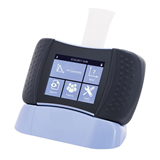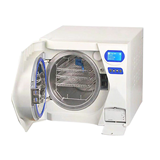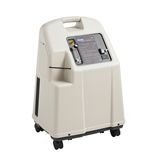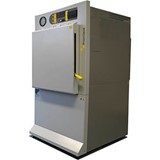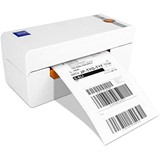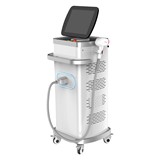Key Takeaways
- An empty room is an active cost, not a passive space. A standard 12-square-metre consulting room in a major Australian city can represent over $15,000 per year in sunk rental and operational costs, even when empty.
- Audit your usage rates now. Use your Practice Management Software (PMS) to track room bookings. If a room's utilisation is below 60-70%, it's underperforming and needs a clear strategy to improve its ROI.
- Sublease to allied health professionals. Partnering with a dietitian, psychologist, or physiotherapist to rent your unused room on a sessional basis is the fastest way to turn a cost centre into a new, passive revenue stream.
- Make your equipment "sweat". For expensive, underused equipment (like a specialist laser or diagnostic tool), create a rental or "per-use" model for other local practitioners to generate income and shorten your payback period.
- Create a dedicated telehealth hub. Instead of leaving a room empty, equip it as a professional, quiet space for all your clinicians to conduct telehealth consultations, improving the quality of virtual care and maximising the use of your space.
Introduction: The silent leak in your practice's profitability
As a medical practice manager in Australia, you are constantly focused on managing rising operational costs and maximising efficiency. You scrutinise staff wages, consumable costs, and utility bills. Yet, one of the most significant financial drains in many practices remains hidden in plain sight: the empty consulting room or the specialist equipment gathering dust in a corner.
In the 2025 economic landscape, with high commercial rents and persistent pressure on healthcare margins, every square metre of your facility must justify its existence. A recent report from commercial real estate firm CBRE highlighted that medical suite rental rates in cities like Sydney and Melbourne continue to climb. Underutilised space is not a neutral asset; it's an active liability that silently erodes your bottom line. This article provides a practical guide for Australian practice managers on how to identify, quantify, and ultimately solve the hidden costs of underused assets, turning dormant space and idle equipment into valuable revenue streams.
The asset utilisation audit: A simple first step
You cannot manage what you do not measure. The first step is to get a clear, data-driven picture of how your assets are actually being used. A vague feeling that "Room 3 is often empty" is not enough. You need hard numbers.
- For rooms: Your Practice Management Software (PMS) is your best friend. Run a report on your appointment book data for the last three months, filtered by room. Calculate the percentage of available clinical hours that each room was actually in use. A standard benchmark for a well-run practice is a room utilisation rate of 70% or higher.
- For equipment: For high-value equipment ($20,000+), start a simple logbook. Track the number of hours the device is used each week. This will quickly reveal if your expensive new laser is a workhorse or a show pony.
This audit gives you a clear baseline and helps you identify your most underperforming assets.
The true cost of an empty room
An empty consulting room costs you far more than just the rent. To understand the full financial impact, you need to calculate its share of all your practice's overheads.
A realistic scenario: The 12-square-metre problem
Let's analyse a single, standard 12sqm consulting room in a Sydney medical centre.
- Pro-rata rent: At a conservative average of $1,200/sqm per year, the rent for this room is $14,400 annually.
- Pro-rata outgoings: Add its share of utilities, cleaning, and body corporate fees, which could be another $1,500 per year.
- Depreciation: The fitout and furniture in that room are depreciating assets, costing you money on your balance sheet.
- Opportunity Cost: This is the most significant hidden cost—the revenue you could be generating from that space.
Even before accounting for the missed opportunity, that single empty room is actively costing your practice over $1,000 every single month.
Strategies for activating your idle space
Once you've identified an underutilised room, you can transform it from a liability into a revenue-generating asset.
- Sessional rentals to allied health professionals: This is the most effective strategy. There is a large and growing market of sole-practitioner allied health professionals (like dietitians, psychologists, podiatrists, and physiotherapists) who need professional consulting space but don't want the overhead of a full-time lease. Offering your room for rent on a sessional (e.g., half-day or full-day) basis creates a new, passive income stream and fosters valuable cross-referral relationships.
- Create a dedicated telehealth hub: Patient demand for telehealth remains strong. Instead of having clinicians conduct video calls from their regular, often busy consulting rooms, convert an underused room into a dedicated telehealth hub. Equip it with a high-quality camera, microphone, professional lighting, and soundproofing. This improves the quality of your virtual care offering and frees up other rooms for in-person consultations.
- Host a sub-specialty clinic: Partner with a specialist (e.g., a dermatologist, endocrinologist, or geriatrician) to run a clinic from your practice one or two days a month. This provides a valuable service to your patients, generates rental income, and strengthens your practice's clinical network.
Making your expensive equipment work for you
The same "use it or rent it" principle applies to expensive, specialised equipment that has a low usage rate.
A common challenge: The underused laser
A GP practice invests $80,000 in a new cosmetic laser. The plan was for two doctors to use it, but one leaves the practice. Now, the laser is only used by one doctor for about six hours per week, making the ROI calculation look grim.
The solution: The practice manager markets the availability of the laser to other local GPs and cosmetic nurses in the area. They create a simple rental model: a flat hourly rate that includes the room, the machine, and basic consumables. This brings in other practitioners on their quiet days, generating thousands in extra revenue each month, significantly shortening the laser's payback period, and turning a high-cost asset into a profitable service hub for the local medical community.
A practical guide to setting up sessional rentals
Transforming your empty room into a revenue stream is a smart business move, but it requires a professional approach. This practical guide provides the essential steps to setting up a successful sessional rental arrangement, ensuring it is both profitable and compliant.
1. Finding the right tenants
Your goal is to find a reliable allied health professional whose services complement your practice and who fits your professional culture.
- Advertise strategically. Post on the classifieds sections of professional Australian associations like the Australian Psychological Society (APS) or Dietitians Australia. These platforms directly target your ideal tenants.
- Leverage your local network. Inform nearby specialists and your Primary Health Network (PHN) that you have a room available. A trusted colleague's referral is often the best source.
- Conduct proper interviews. Treat it like a professional partnership. Meet with potential tenants to ensure their practice style and values align with yours.
2. Pricing your space
Your rental rate should be competitive for your local market and reflect the quality of your facility and the services you include.
- Research the market. Look at online listings for "sessional rooms" or "consulting rooms for rent" in your suburb to understand the going rate per half-day or full-day session.
- Create a clear fee structure. Most sessional agreements in Australia are based on a fixed rate per session (e.g., $150 + GST for a 4-hour session). This is simpler to manage than a percentage of billings.
- Define what's included. Be explicit about what the fee covers. This typically includes use of the room, electricity, internet, and access to the waiting room and staff kitchen. Specify if reception support (e.g., greeting patients, processing payments) is included or available for an additional fee.
3. The sessional licence agreement
A formal agreement is non-negotiable. Do not rely on a handshake. A Sessional Licence Agreement is a legal document that protects both parties.
- Get professional advice. Have a lawyer with experience in commercial property or healthcare draft or review your agreement.
- Include key clauses. Your agreement must clearly state:
- The exact hours and days of use.
- The agreed-upon fees and payment schedule.
- Confidentiality and privacy obligations.
- A requirement for the visiting practitioner to provide a Certificate of Currency for their own public liability and professional indemnity insurance.
Conclusion
In Australia's high-cost healthcare environment, effective practice management requires a shift in perspective. You are not just a manager of people and processes, but a manager of valuable assets. By actively auditing the utilisation of your rooms and equipment, you can identify the silent financial leaks in your practice. Turning these underperforming assets into revenue-generating opportunities through strategies like sessional rentals and equipment sharing is a hallmark of a financially resilient and strategically savvy modern medical practice.








-160x160-state_article-rel-cat.png)
